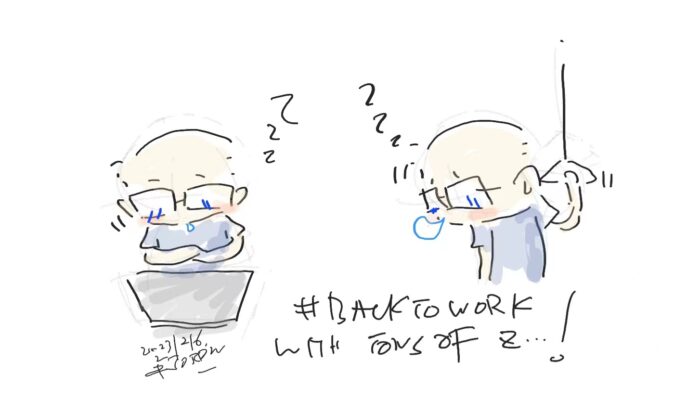
2-6 #Backtowork : Japan, Netherlands to join the US to abide by the additional sanctions on semiconductor export to China; India’s Union Budget 2023 includes the reduction in customs duty on the import of inputs/parts for manufacturing electronic device; etc.

Samsung Electronics’ mobile head Roh Tae-moon has said the company counts on demand for its premium smartphone devices to drive double-digit growth in sales in 2023, despite the consumers’ pent-up desire for a phone shopping and macroeconomic headwinds. Given that the sales of the previous Galaxy S22 series are thought to be around 24M units, the S23 series has to sell more than 26M units.(Android Headlines, Gizmo China, ET News, Korea Herald)
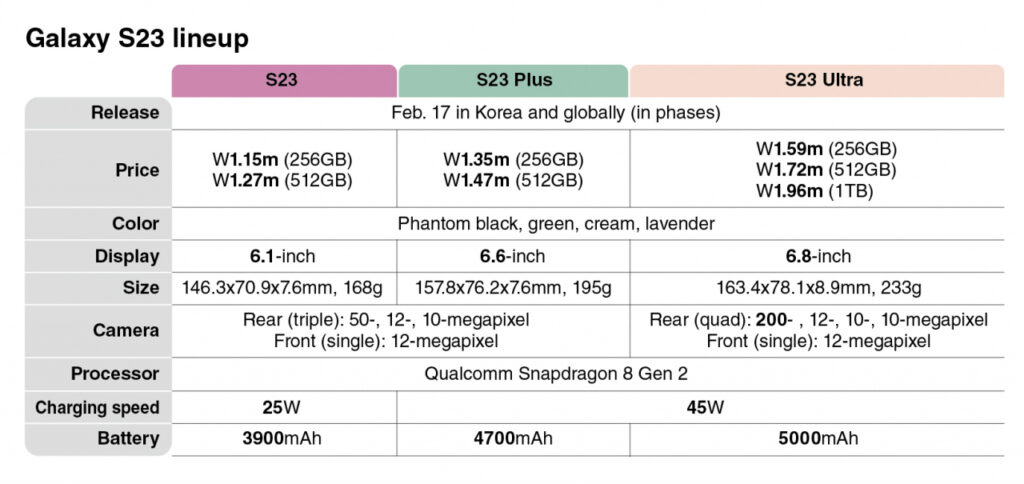
The global smartphone market remained under pressure in 4Q22 with shipments declining by 18% YoY to the lowest level for a holiday quarter since 2013, even as they grew by 1% QoQ to 303.9M units, according to Counterpoint Research. Shipments for the full year 2022 also declined to 1.2B units, the lowest since 2013. Consequently, global smartphone revenue and operating profit also saw a decline, although to a lesser degree than in shipments. An increased mix of premium phone offerings by major OEMs drove up the overall average selling price (ASP) by 5% YoY in 2022. The 9% decline in revenue, while lower than in shipments, resulted in annual smartphone revenues amounting to USD409B, the lowest since 2017. A larger decline was prevented by a 1% growth in Apple, the only top 5 smartphone OEM to do so. (Apple Insider, Counterpoint Research)
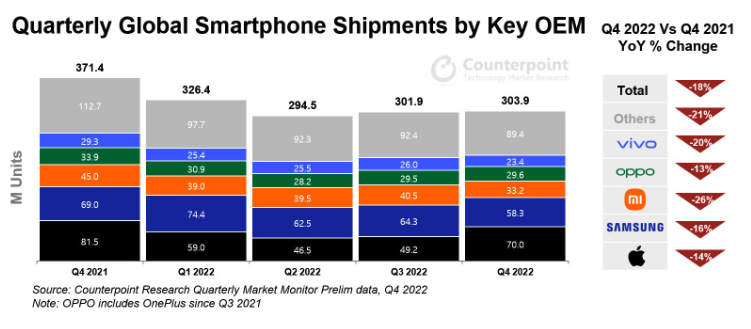
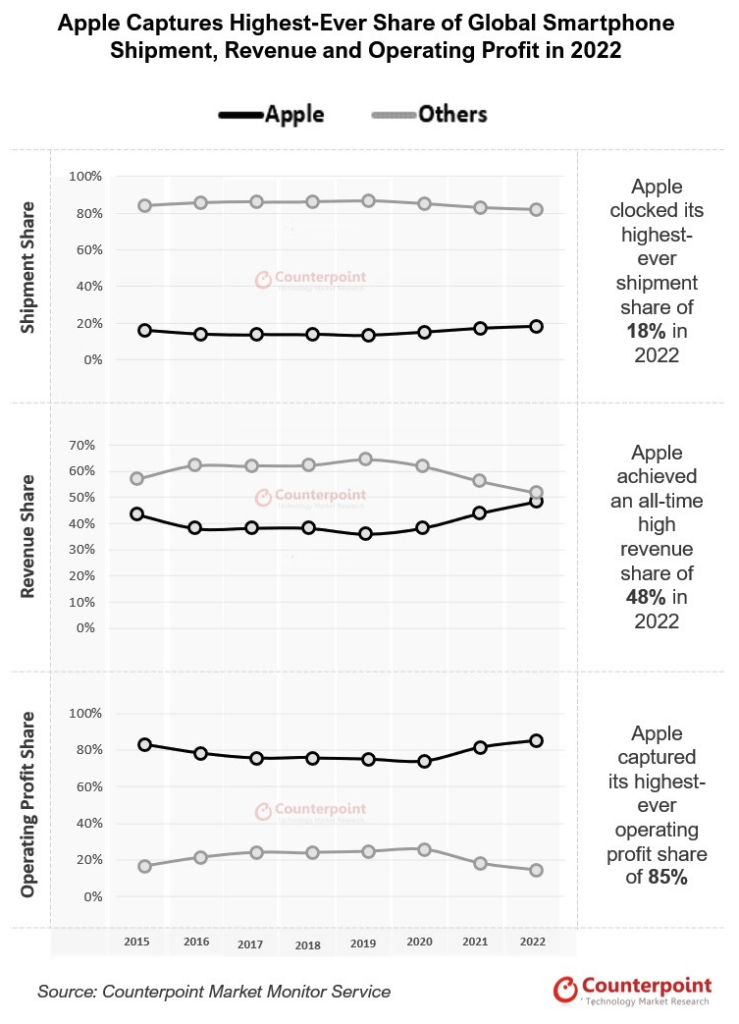
Worldwide shipments of total devices (PCs, tablets and mobile phones) are projected to decline 4.4% in 2023, to total 1.7B units, according to Gartner. In 2022, the devices shipment market declined 11.9%. Gartner forecasts worldwide smartphone shipments to decline 4% in 2023. Smartphone shipments are projected to total 1.23B units in 2023, down from 1.28B units in 2022. Consumers are holding onto their phones longer than expected, from 6 to 9 months, and moving away from fixed to flexible contracts in the absence of meaningful new technology. (Gizmo China, Gartner)
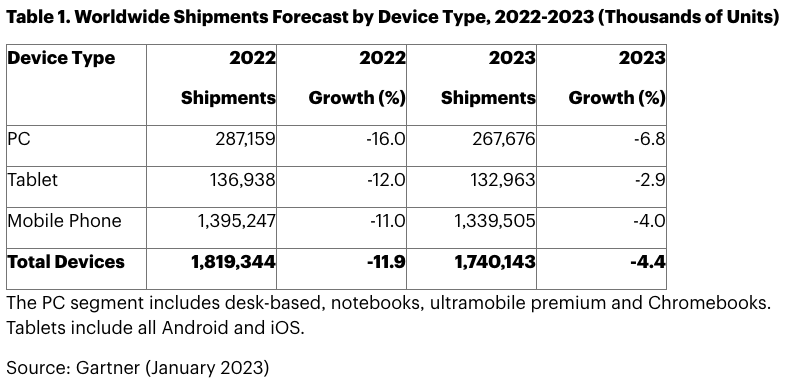
According to new research from TechInsights, global smartphone shipments fell -19% YoY to 296M units in 4Q22. Apple topped the global smartphone market with an impressive 24% share in 4Q22, the highest fourth quarter smartphone market share ever for the company. Samsung ranked in second place with 20% share, its highest fourth quarter performance since 2016. Xiaomi, OPPO (including OnePlus) and vivo stayed in the top five list. Global smartphone shipments fell -19% YoY to 296M units in 4Q22. This is the sixth consecutive quarter of annual decline by smartphone volumes. Apple shipped 71.1M iPhones and topped the global smartphone market with a record high 24% share in 4Q22. (CN Beta, Culf of Mac, Strategy Analytics)
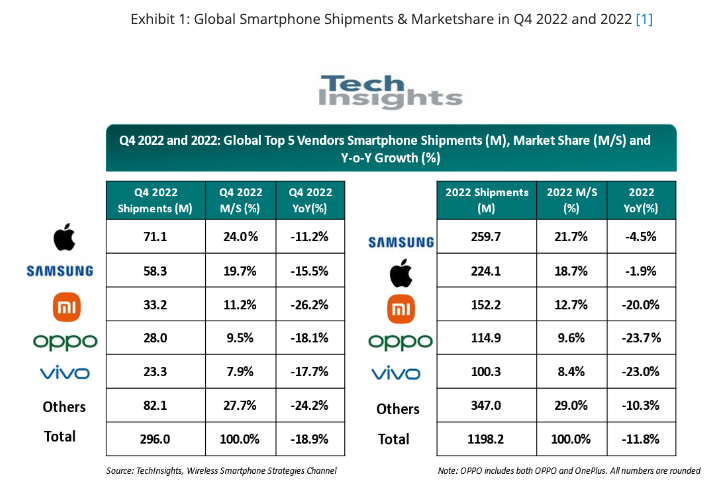
Meta, the parent company of Facebook and Instagram, posted a revenue decline for the third consecutive quarter in 4Q22 as it faces a pullback in ad spending and heightened competition from the likes of TikTok. Facebook now has 2B daily active users (DAU). The report marks the first time Facebook, which added 16M users last quarter, has reached 2B daily users. (Engadget, Variety, Facebook)
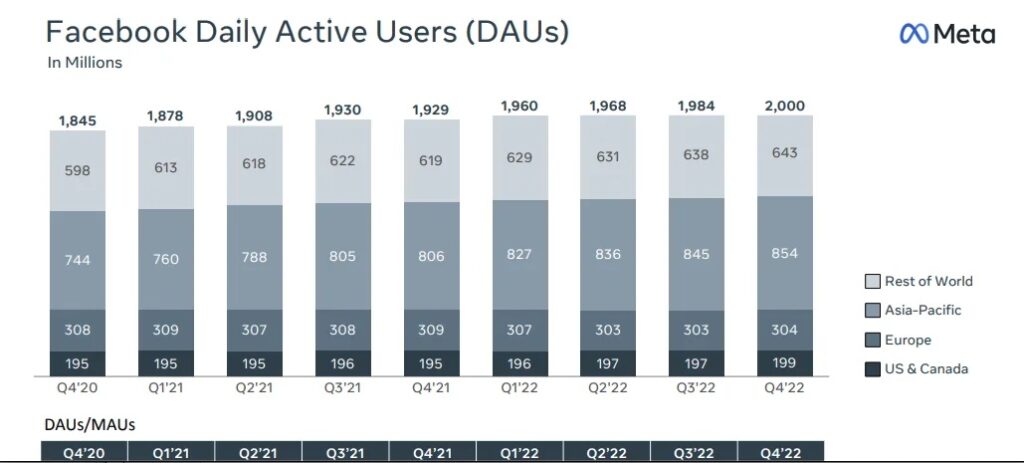
Apple has secured the top spot on Forbes’ annual list of the World’s Most Admired Companies, taking first place for the 16th consecutive year. In a repeat of the last 15 editions of the list, Apple has managed to maintain its position at number one on the list, compiled by Forbes. JP Morgan Chase makes it to fifth place on the list, ahead of Walt Disney in sixth. Retailer Costco manages to get seventh place, Pfizer hits eighth, Alphabet lands at ninth, and American Express rounds out the top ten.(Fortune, Apple Insider, Patently Apple, CN Beta)
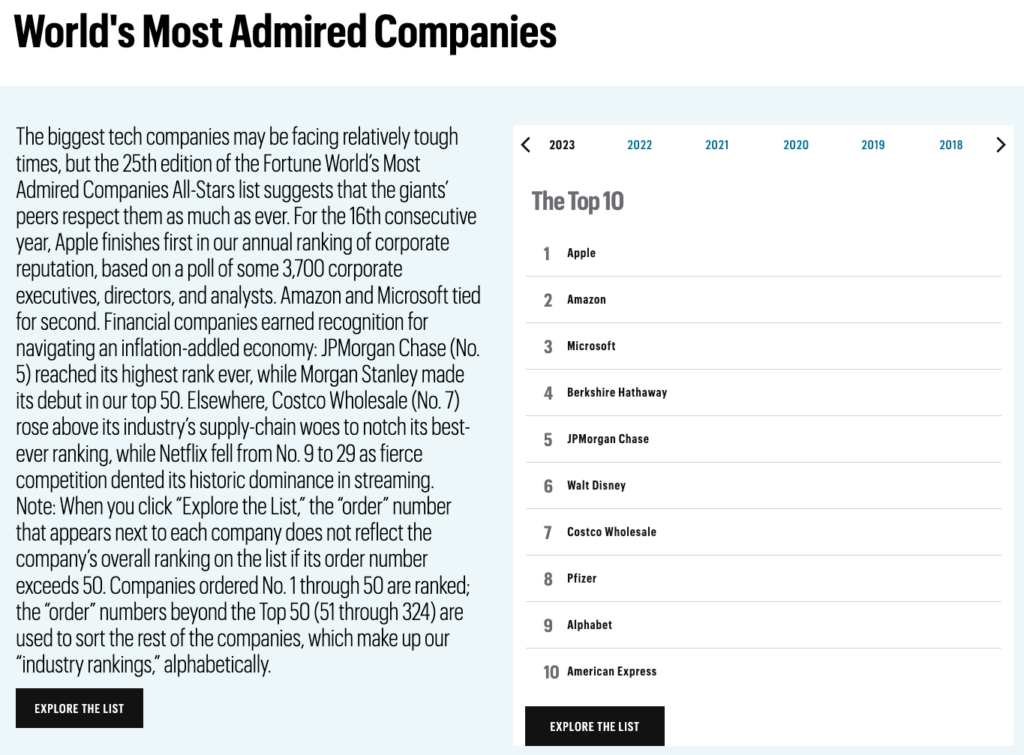
The government of India presented its Union Budget 2023. One key proposal from the Finance Minister includes the reduction in customs duty on the import of inputs/parts for manufacturing electronic devices. As per the Finance Minister Nirmala Sitharaman, the government will provide relief in customs duty on the import of parts like the camera lens used in making the module of smartphones. This will be reduced from 2.5% to zero. There will be a concessional duty on lithium-ion cells for batteries to further promote smartphone production in India. The relief will be valid for 1 year. The benefits will help brands launch 5G smartphones in the budget segment. Additionally, the FM also proposed reducing the customs duty on parts of open cells of TV panels from 5% to 2.5%. (Gizmo China, Bloomberg Tax, Hindustan Times, Business Today)
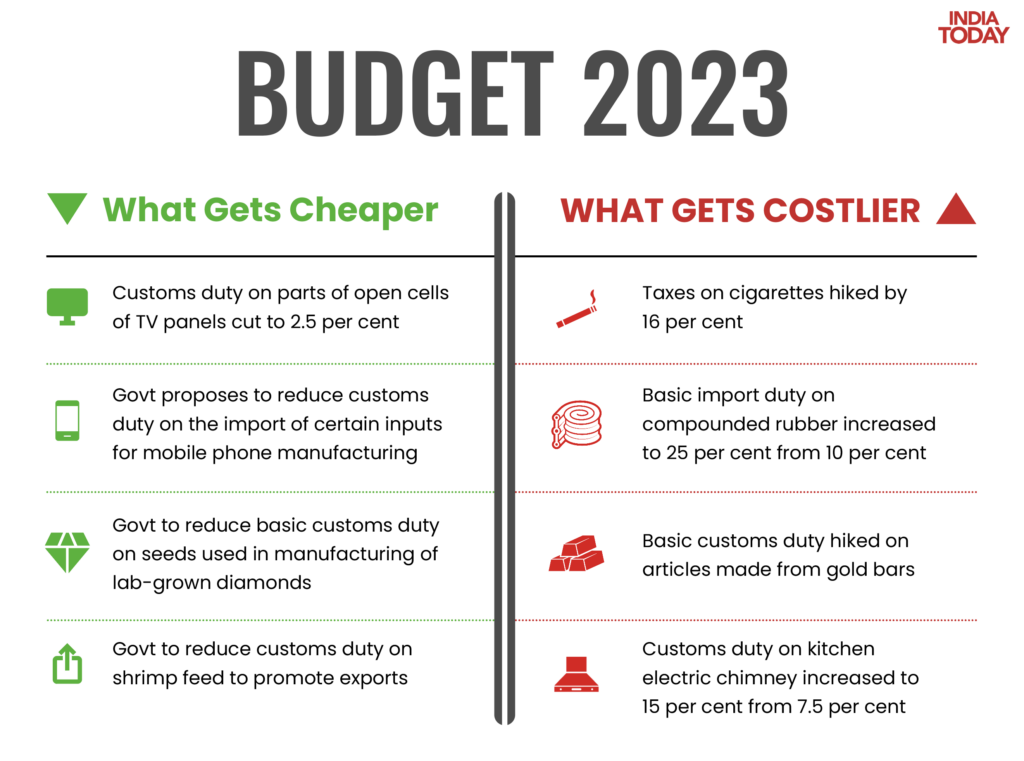
Dutch social enterprise Fairphone, which makes modular and more sustainable and ethical consumer electronics. Fairphone raises USD53M in growth capital from an international consortium of impact investors for ‘sustainable’ consumer electronics. Fairphone had previously raised USD40.7M spread across 9 funding rounds. Fairphone said the new funding will be used to strengthen its brand positioning — and create further awareness around fairness and sustainability in the electronics industry. (TechCrunch, Crunchbase, Nation View)
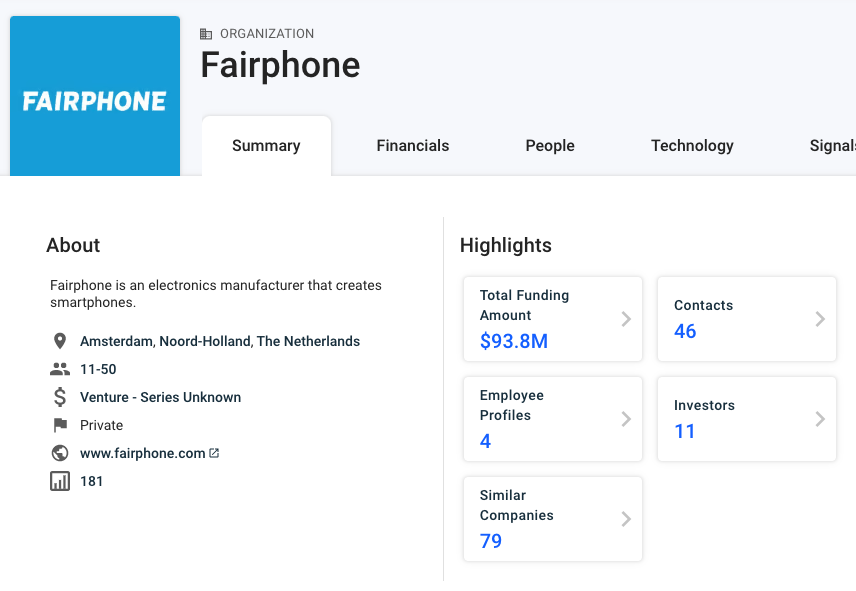
Apple has reduced the trade-in values for older iPhone and Watch models. Android phones, which are also accepted as part of its trade-in program, have received a cut in their trade-in value as well. At the same time, trade-in values for some older MacBook models have received an increase. iPhone 13 Pro and Pro Max saw the biggest cuts in their trade-in value at USD80, while the MacBook Pro will be USD40 more. Interestingly, the iPhone 7 Plus only lost USD10, and all iPad models remain the same. Apple Watch SE, Series 5, and Series 7 have also lost USD5 off their trade-in value.(Neowin, MacRumors, Apple)
There are more than 2B active iPhones, iPads, Macs, and other Apple devices worldwide. Apple last shared its active install base in Jan 2022, when the company had 1.8B active devices worldwide. Apple did not provide numbers for individual devices, but Apple has long had more than 1B active iPhones worldwide. (MacRumors, Apple)
Apple has discussed selling a new top-of-the-line iPhone alongside the Pro and Pro Max models in 2024 at the earliest, according to Bloomberg’s Mark Gurman. Based on this timeframe, the device would be part of the iPhone 16 lineup or later. (CN Beta, Engadget, MacRumors, Bloomberg, The Verge)

Worldwide tablet shipments posted flat growth of 0.3% YoY in 4Q22, totaling 45.7M units, according to IDC. For the full year 2022, the tablet market saw a decline of 3.3% YoY, ending 2 years of solid growth although shipments remain well above pre-pandemic levels. Meanwhile, Chromebook shipments continued to contract in 4Q22 with shipments totaling 3.6M units for a YoY decline of 24.3%. Shipments for the full year were down 48% in 2022 after an astounding 180.5% growth in 2021. Apple and Samsung continued to be the main drivers for the tablet market. Apple remains the indisputable leader in this space and gained ten percentage points in market share compared to 4Q21. (GSM Arena, CN Beta, IDC)
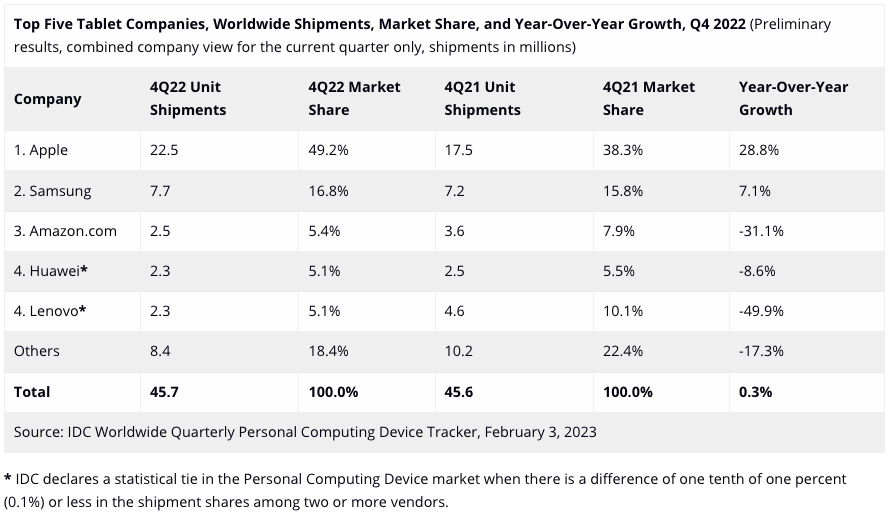
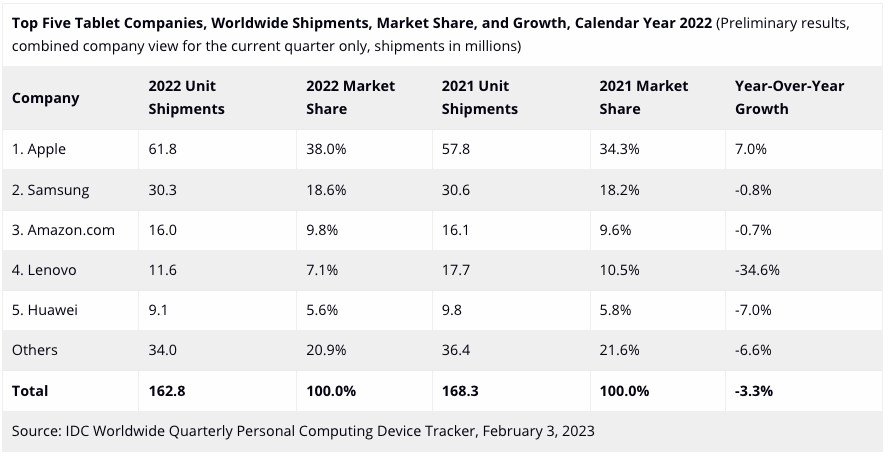
Delayed purchases from 3Q22 paid off for consumers looking for holiday deals and the tablet market declined at a slower pace than the last five quarters at -8% to 44.2M units in 4Q22. This closed off the year 2022 at 162.1M units shipped for a -12% YoY decline as the world dealt with war, economic volatility, and a natural ebb in demand from pandemic highs. Apple and Samsung stood out among the top vendors for posting growth during the holiday season, taking a combined 58% share of the global tablet market while competitive landscape changes to meet post-pandemic demand patterns. Apple shipments exceeded expectations and grew 15% YoY to 18.1M units, helped by a favorable comparison to their supply constrained results in 2021. (CN Beta, Cult of Mac, Strategy Analytics)
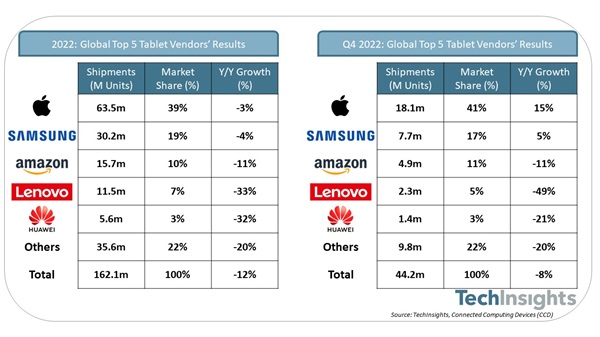

Meta was allegedly working on an Android smartwatch with a camera. The project was reportedly scrapped in 2022 as a result of cost-cutting. The company is allegedly giving the effort some new life. The device runs Android and not Wear OS, and it’s a “new iteration” of the previous watch that was leaked in 2021. Meta still wants wearables to play a role in the Metaverse. (Android Central, Twitter)
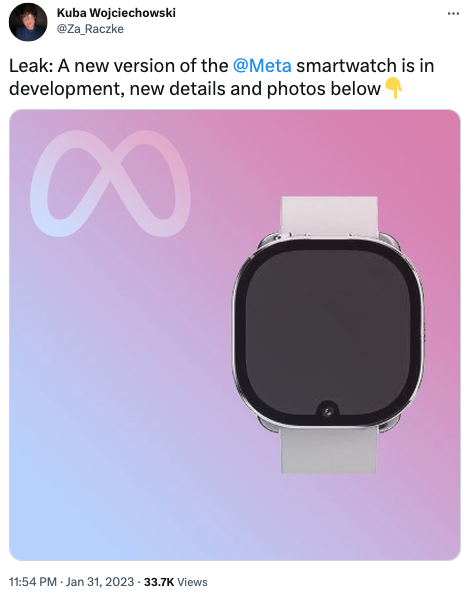

Samsung has unveiled plans to develop new “extended reality” products and experiences with help from key partners including Google and Qualcomm. Samsung’s announcement all but confirms the company is developing a new wearable display or headset. TM Roh, the president and head of Samsung’s mobile experience business, has indicated that Samsung’s venture into extended reality would involve service partnerships with Meta and Microsoft, although he declined to elaborate on specifics.(Android Authority, Washington Post)
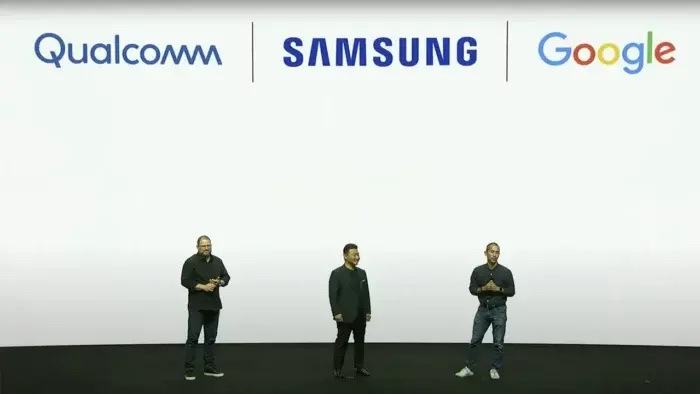

When Apple discontinued its first HomePod in Mar 2021, the company said that it would be focusing instead on the lower-cost HomePod mini. Matthew Costello, Apple’s vice president, Hardware Engineering and Operations, has indicated that Apple had not originally intended to revisit the HomePod. However, they have deeply studied the learnings from the first HomePod and HomePod mini, and they introduced the new HomePod when it was able to achieve their broad range of experience goals. (Apple Insider, TechCrunch)
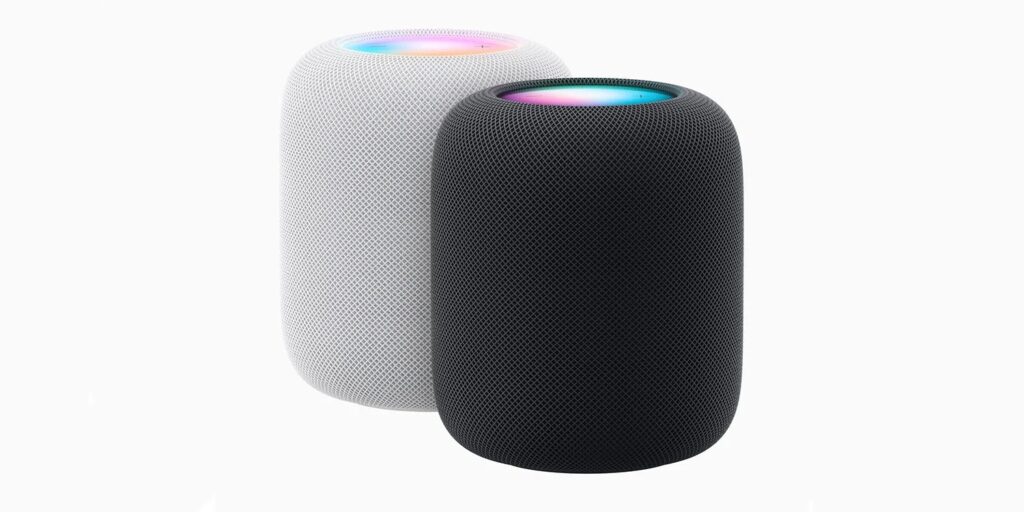
TF Securities analyst Ming-chi Kuo expects Apple’s next important acoustic product refresh time is will be in 2H24-1H25. The following new products will likely start mass production in 2H24 at the earliest: Homepod mini 2, Airpods Max 2, and low-cost version of Airpods. (Twitter, Apple Insiders, CN Beta)
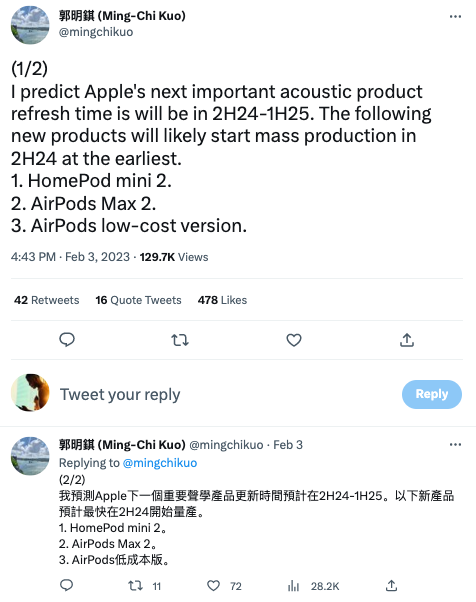

Spotify founder and CEO Daniel Ek is launching a new startup, Neko Health, which will offer advanced full-body scanning to help doctors find and prevent disease. It is launching after 4 years of research and development. Neko Health uses the latest advancements in AI to render a full body scan aimed at helping patients address both current and potential future health concerns. Likewise, this data can be used by medical professionals to create a holistic view of patients. They combine more than 70 different sensors to capture a detailed picture of user’s health. Neko Health has set up a new health clinic in Stockholm where the non-invasive treatments, which will take about 15 minutes followed by a doctor’s consultation, will take place. For a EUR150 patient fee, these examinations will collect over 50M data points about the skin, heart, vessels, respiration, inflammation and more. (The Verge, Linkedin, Tech.eu, Sifted)
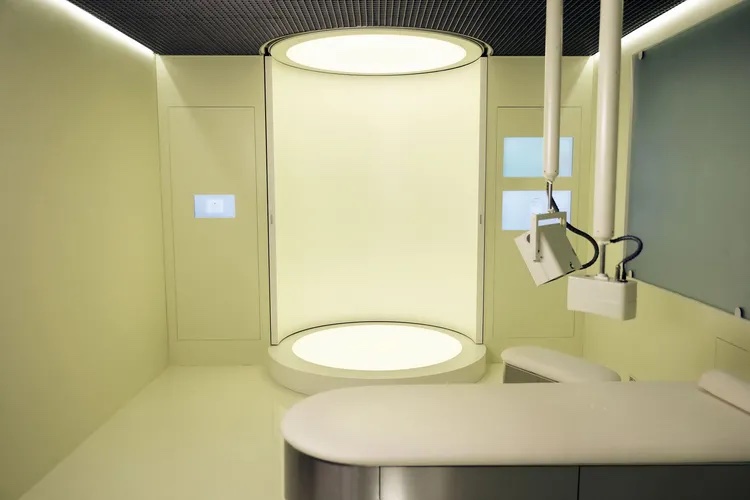
In late 2022, Google invested around USD300M in one of the OpenAI rivals, Anthropic. Anthropic is also developing its own general-purpose chatbot: a potential rival to ChatGPT named Claude. Google already has plenty of in-house expertise developing AI language systems, and one motivation for the deal is simply building up Google’s cloud computing business. (VentureBeat, Financial Times, The Verge, Fortune)

ChatGPT, the popular chatbot from OpenAI, is estimated to have reached 100M monthly active users in Jan 2023, just 2 months after launch, making it the fastest-growing consumer application in history, according to a UBS study. The report, citing data from analytics firm Similarweb, said an average of about 13M unique visitors had used ChatGPT per day in Jan 2023, more than double the levels of Dec 2022. (Neowin, Reuters, Yahoo, Business Insider, AI Business, Similarweb)
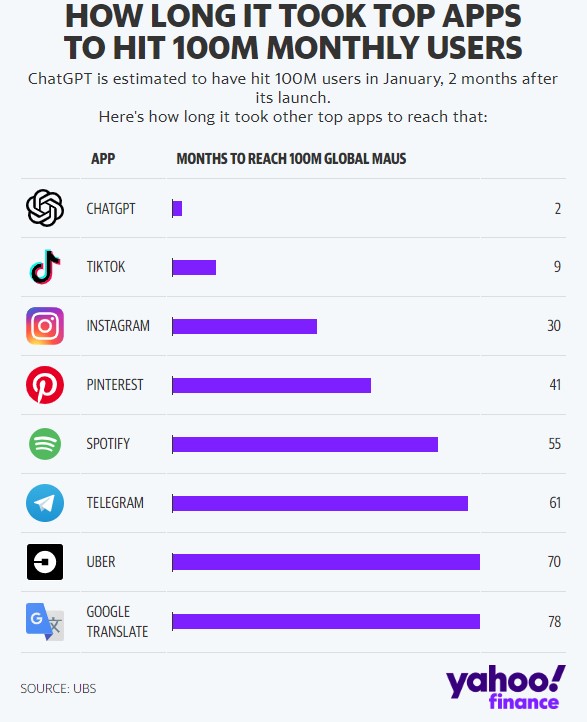
Microsoft and OpenAI have announced that they are extending their partnership with “a multiyear, multibillion dollar” investment to more quickly deliver AI breakthroughs. The partners have said they are looking to share the benefits with the world but also that developers and organizations will get access to the best tools via Azure to help build and run their applications. Firstly, Microsoft will help with the deployment of specialized supercomputers so OpenAI can do its work quicker. Secondly, Microsoft will deploy OpenAI models to its consumer and enterprise products to introduce “new categories of digital experiences”. Finally, Azure will be OpenAI’s exclusive cloud provider, powering OpenAI’s workloads across research, products, and API services.(Neowin, Microsoft)


Qualcomm’s latest financial earnings report underscores a challenging year for smartphone OEMs as demand falls. The company reported USD9.46B over the quarter ending on 31 Dec 2022, which is not only a 12% decline compared to the same period in late 2021 but also falls below analyst expectations. The company’s QCT business is responsible for most of its revenue, representing sales of handsets, automotive, and IoT. The division overall saw an 11% drop in revenue, which was attributed to the 18% decline in handset revenue. (Android Central, Android Headlines, Qualcomm)
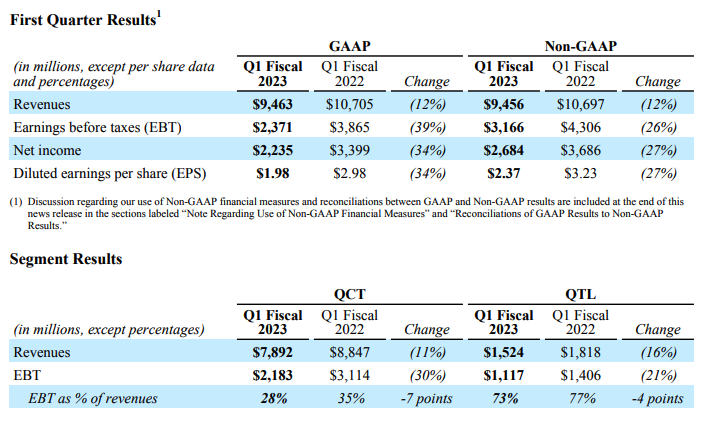
Alex Rogers, the President of Qualcomm Technology Licensing and Global Affairs, has stated that the recent changes made by the U.S. commerce department are still unknown to Qualcomm and that they do not foresee any significant impact on their shipments to Huawei. He explained that Qualcomm already holds licenses, which allow them to ship 4G and other chipset technologies, including Wi-Fi, to Huawei. These licenses were issued after the commerce department confirmed that they posed no threat to national security and will remain in effect for a number of years. This clarification from Qualcomm comes as a relief for the tech community, as previous reports had indicated that the U.S. had barred the export of 4G, Wi-Fi 6, 7, and AI chipsets to Huawei.(Gizmo China, Barron’s, Huawei Central, Qualcomm)
Japan and Netherlands have decided to join the US and agreed to abide by the additional sanctions on semiconductor export to China. However, Semiconductor Equipments and Material International (SEMI), an industry association that includes the world’s top semiconductor designing, manufacturing, and selling companies, stated that the curbs laid on China were not strict enough. According to SEMI, if US allies like Japan and Netherlands did not levy tougher curbs, then the sanctions would be ineffective. The industry group has openly sided with the US in the US-China Tech war and said that it had a vested interest in the US and welcomed the additional sanction agreement on China. SEMI believes that China will keep on growing in the semiconductor industry unless the allies come together and agree to wider control and restrictions on Chinese fabrication facilities. (Gizmo China, Reuters)
In 2022, both TSMC and Samsung have entered the 3nm era. Although TSMC’s 3nm has won orders from Apple and other customers, it is rumored that the foundry price is as high as USD20,000, which is more than 25% higher than that of 5nm. According to Samsung, the current mass production is the 3nm GAE process, which can reduce power consumption by 45%, reduce area by 16%, and improve performance by 23%. The second-generation 3nm GAP process can reduce power consumption by 50%, improve performance by 30%, and reduce the area by 35%, with better results. It is expected to be mass-produced in 2024. In addition to Samsung’s own use, the 3nm process has also locked in 4 major customers, including IBM, Nvidia, Qualcomm and Baidu. The 3nm chips of these customers are expected to be mass-produced from 2023 to 2024, some may be the first generation of 3nm, and some will be the second generation of 3nm process. (CN Beta, Digitimes)

OPPO has launched its first power management chip SUPERVOOC S. Through SUPERVOOC S, the mobile phone can improve the battery discharge efficiency, up to 99.5%, which is almost non-destructive; at the same time, it is also safer and more integrated, from intelligent identification of charging mode to battery management, all integrated in one chip. It has 3 major features: 1) It can improve the battery discharge efficiency, which is as high as 99.5% and is almost non-destructive; 2) It is safer and more integrated in functions; and 3) In the future, all OPPO and OnePlus models with charging power above 100W will be equipped with SUPERVOOC S.(Laoyaoba, Sparrow News, Gizmo China)

The Semiconductor Industry Association (SIA) has announced global semiconductor industry sales totaled USD573.5B in 2022, the highest-ever annual total and an increase of 3.2% compared to the 2021 total of USD555.9B. Sales slowed during 2H22, however. 4Q22 sales of USD130.2B were 14.7% less than the total from 4Q22 of 2021 and 7.7% lower than the total from 3Q22. And global sales for the month of Dec 2022 were USD43.4B, a decrease of 4.4% compared to Nov 2022 total. (Laoyaoba, SIA)
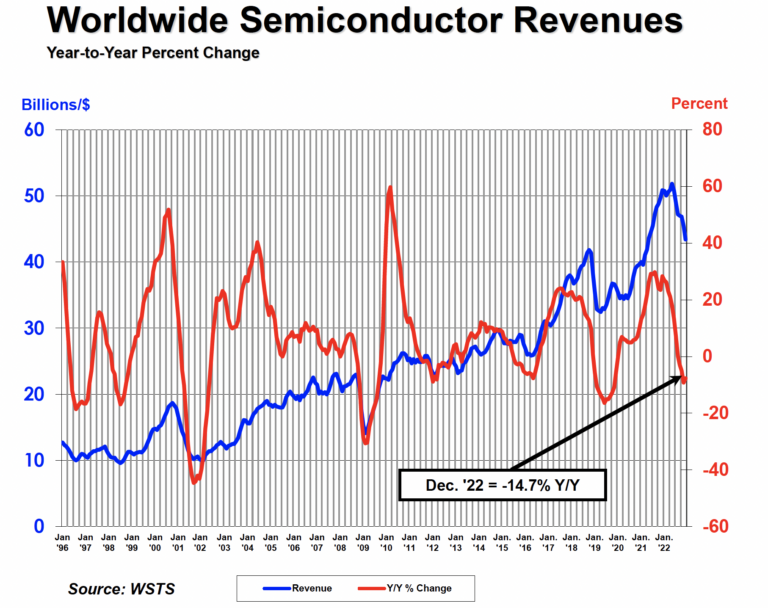
Samsung’s Galaxy S23 series is the first flagship line from the company that uses Qualcomm Snapdragon chips globally, with exclusive customization dubbed “Qualcomm Snapdragon 8 Gen 2 Mobile Platform for Galaxy”. Qualcomm has officially stated that this customized version of Snapdragon 8 Gen 2 still uses TSMC’s 4nm process technology, rather than Samsung’s own production.(CN Beta, My Drivers, 9to5Google)
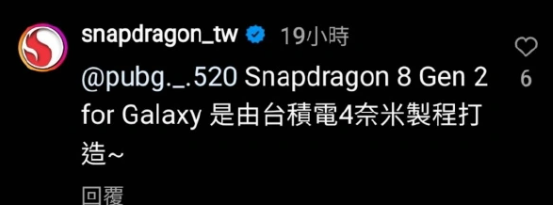

The Huawei Mate 50 series features Huawei’s “unbreakable” Kunlun glass. According to the VP of Huawei’s smartphone product line, Li Xiaolong, the development of the Kunlun glass took 4 years. The Kunlun glass is inspired by the strong and durable structure of reinforced concrete and is made through a rigorous process, including 24 hours of crystal growth, 108 procedures, and a 1600 degree melting process. The glass contains billions of high-strength nanocrystals, making the glass highly impact-resistant and able to withstand drops 10 times better than other smartphone glass. (Gizmo China, My Drivers)
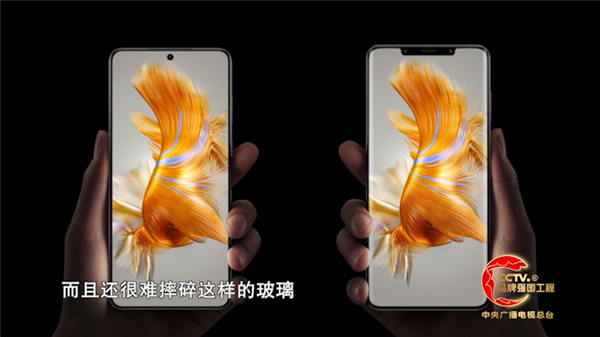

Apple’s iPhone 16 Pro Max (or Ultra should Apple change the iPhone naming scheme) will continue to be the only iPhone model that will get a higher-end, upgraded periscope camera with new zoom capabilities in 2024, according toTF Securities analyst Ming-Chi Kuo. Apple will allegedly limit periscope lens technology to the larger iPhone 15 Pro Max to be launched in 2023, perhaps because of the space that the hardware requires. (MacRumors, Gizmo China, Twitter)
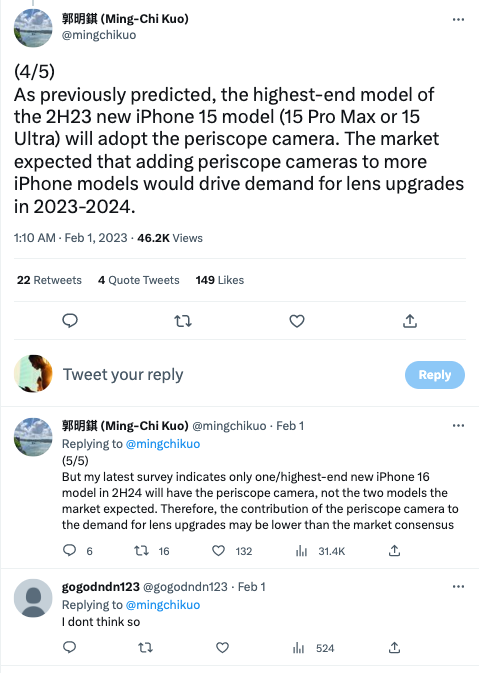

TM Roh, president and head of Samsung’s mobile experience business, acknowledges that there’s interest and promise in bringing satellite connectivity to smartphones. However he also thinks it is too soon because the satellite functionality on today’s phones is still fairly limited. He has indicated that when there is the right timing, infrastructure and the technology is ready, then of course for Samsung Galaxy, for their mobile division, they would also actively consider adopting this feature as well.(CN Beta, The Verge, XDA-Developers, Android Authority, CNET)